Find the relation among accelerations of wedge A and the rod B supported on wedge A. Rod B is restricted to move vertically by two fixed wall comers shown in figure-1.88.
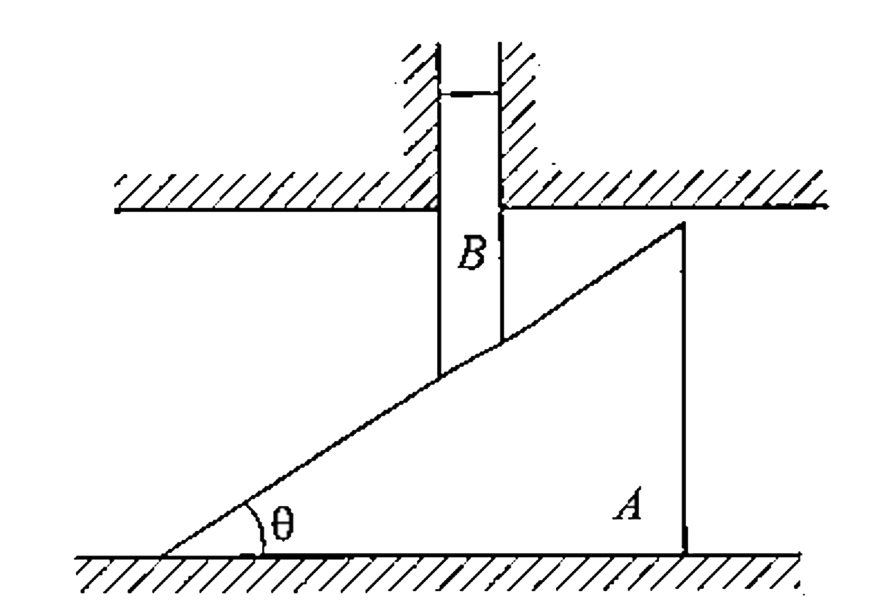
Step by step video & image solution for Find the relation among accelerations of wedge A and the rod B supported on wedge A. Rod B is restricted to move vertically by two fixed wall comers shown in figure-1.88. by Physics experts to help you in doubts & scoring excellent marks in Class 11 exams.
Topper's Solved these Questions
- BOOK - PHYSICS GALAXY - ASHISH ARORACHAPTER - KINEMATICSEXERCISE - Practice Exercise96videos
KINEMATICS
- BOOK - PHYSICS GALAXY - ASHISH ARORACHAPTER - KINEMATICSEXERCISE - Discussion Question18videos
KINEMATICS
- BOOK - PHYSICS GALAXY - ASHISH ARORACHAPTER - GRAVITATIONEXERCISE - Unsolved Numerical94videos
GRAVITATION
- BOOK - PHYSICS GALAXY - ASHISH ARORACHAPTER - LINEAR MOMENTUM & ITS CONSERVATIONEXERCISE - exercise 1.33videos
LINEAR MOMENTUM & ITS CONSERVATION
Similar Questions
Knowledge Check
- Question 1 - Select One
Let a1&a2 are the acceleration of A & B. Let b1&b2 the acceleration of C & D relative to the wedges A and B respectively, choose the right relation. (directions of a1,a2,b1&b2 are shown in figure below) :
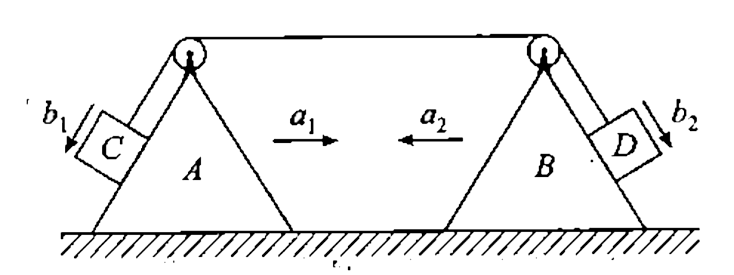 Aa1−a2+b1−b2=0Ba1+a2−b1−b2=0Ca1+a2+b1+b2=0Da1+b2=a2+b1
Aa1−a2+b1−b2=0Ba1+a2−b1−b2=0Ca1+a2+b1+b2=0Da1+b2=a2+b1
Find the relation among the acceleration of blocks A and B constrained to move along the inclined surfaces of the fixed wedge shown in figure
 View Solution
View SolutionNeglect friction. Find acceleration of m,2mand3m as shown in the figure. The wedge is find.
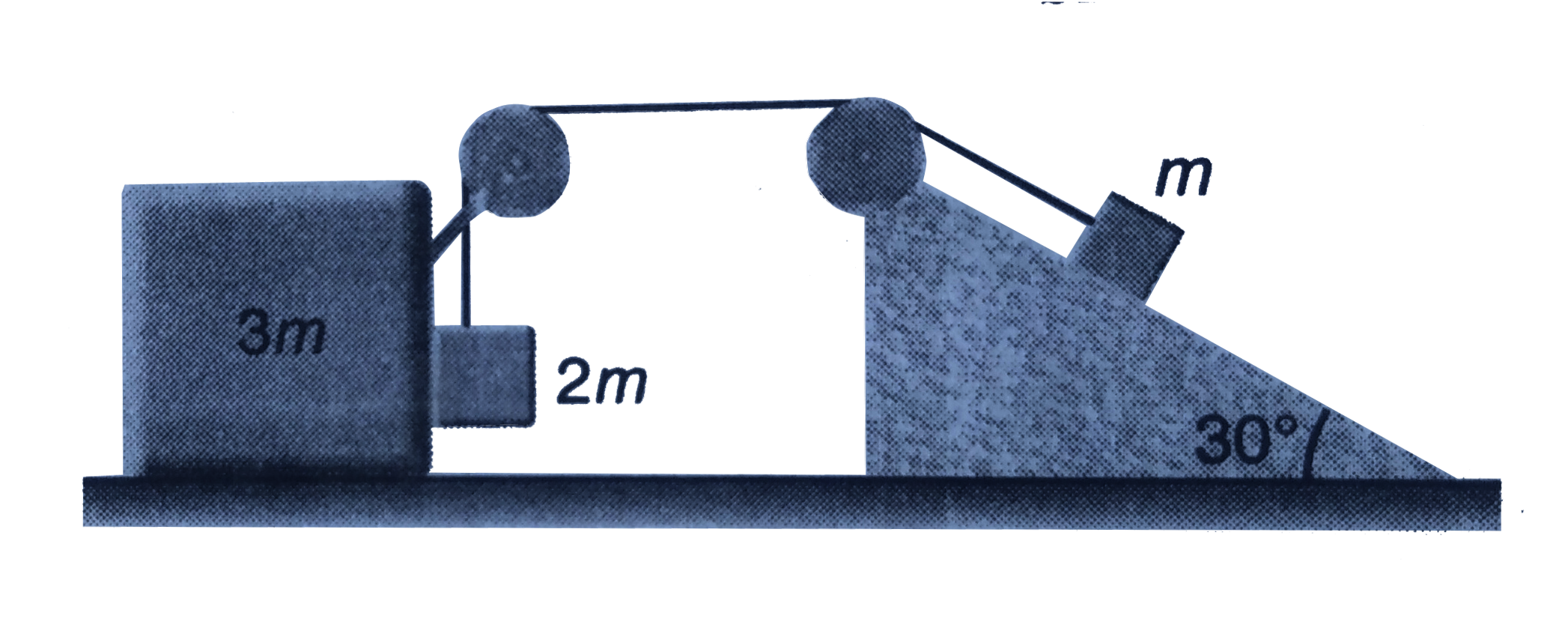 View Solution
View SolutionA vertical rod of mass m is kept on a wedge of mass M. If a horizontal force F acts on the wedge and the rod is constrained to move vertically, after releasing the rod-wedge system, (a) find their speeds when the wedge moves through a distance x. (b) What is the power delivered by the rod on the wedge aftre a time t measured from the instant of release?
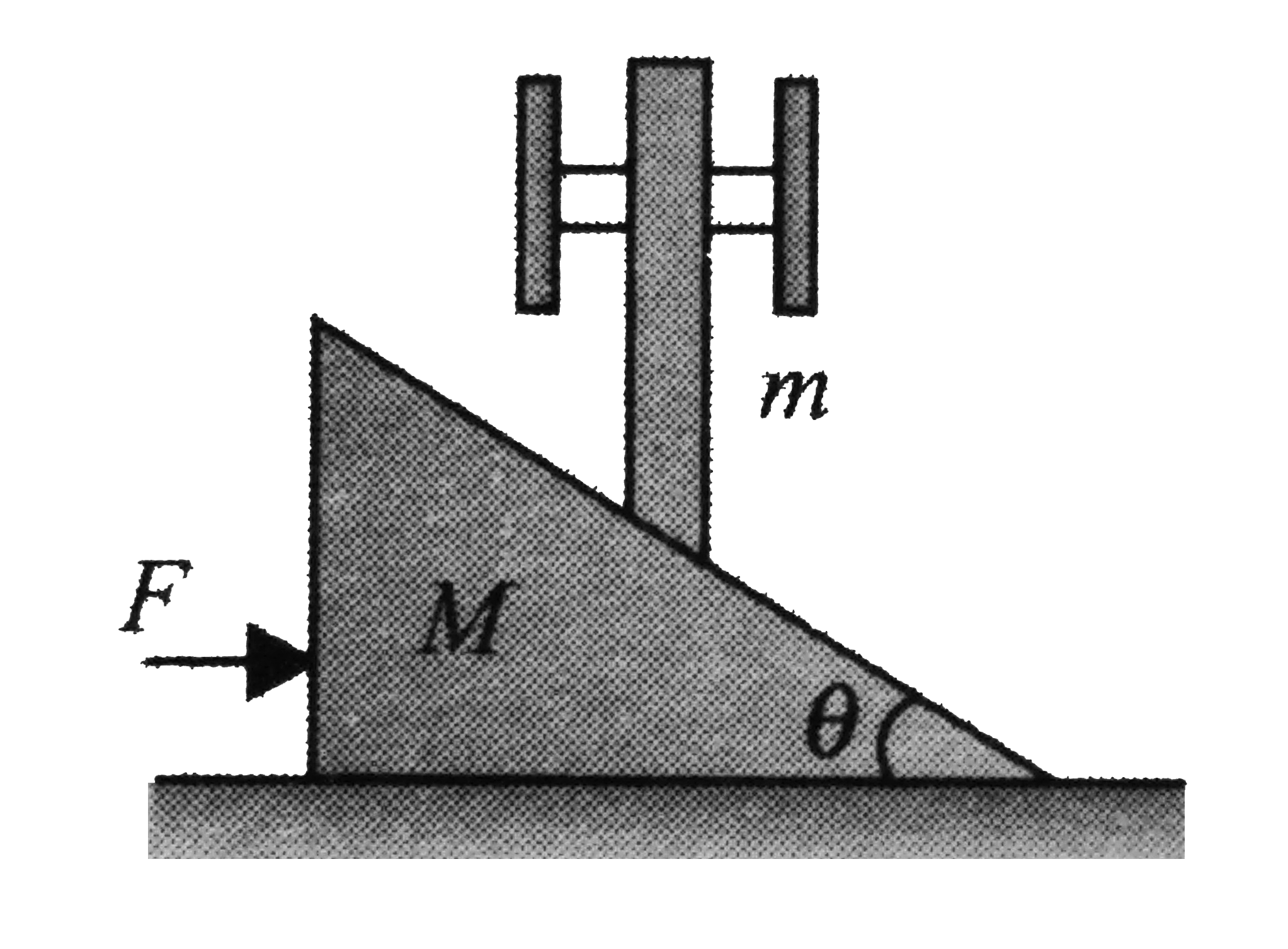 View Solution
View SolutionA rod 'A' constrained to move in vertical direction rests on a wedge B, as shown in the Fig. Find the accelerations of rod A and wedge B instantaneously after system is released from rest, neglecting friction at all the contact surfaces.
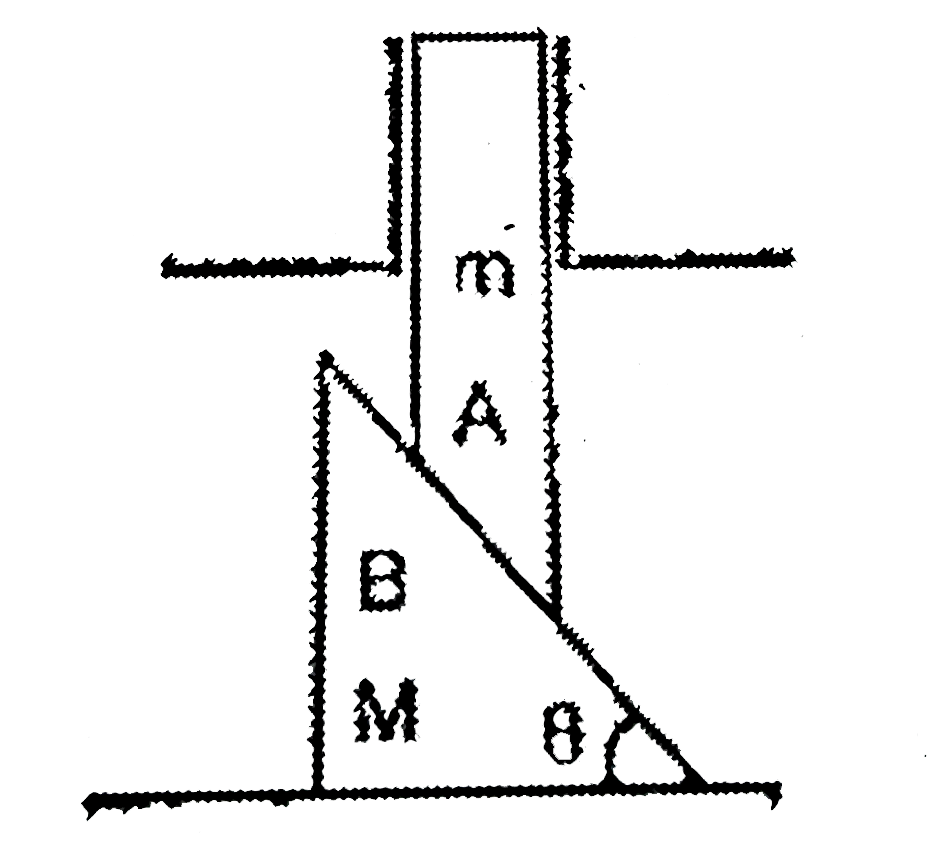 View Solution
View SolutionFind the speed of the block B when the wedges A and C are moving toward each other with speed v and the strings connected to block make and angle θ with the vertical, as shown in figure
 View Solution
View SolutionFind the accelerations of rod A and wedge B in the arrangement shown in figure if the ratio of the mass of the wedge to that of the rod equals η, and the friction between all contact surfaces is negligible.
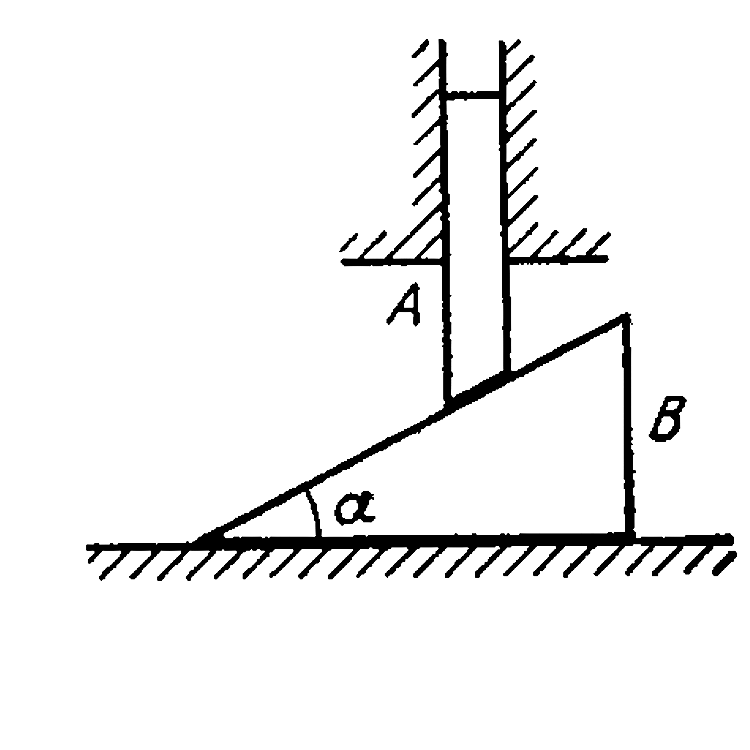 View Solution
View SolutionFind the acceleration of rod A and wedge B in the arrangement shown in figure if the mass of rod equal that of the wedge and the friction between all contact surfaces is negligible Take angle of wedge as 45∘&g=9.8m/s2
 View Solution
View Solution


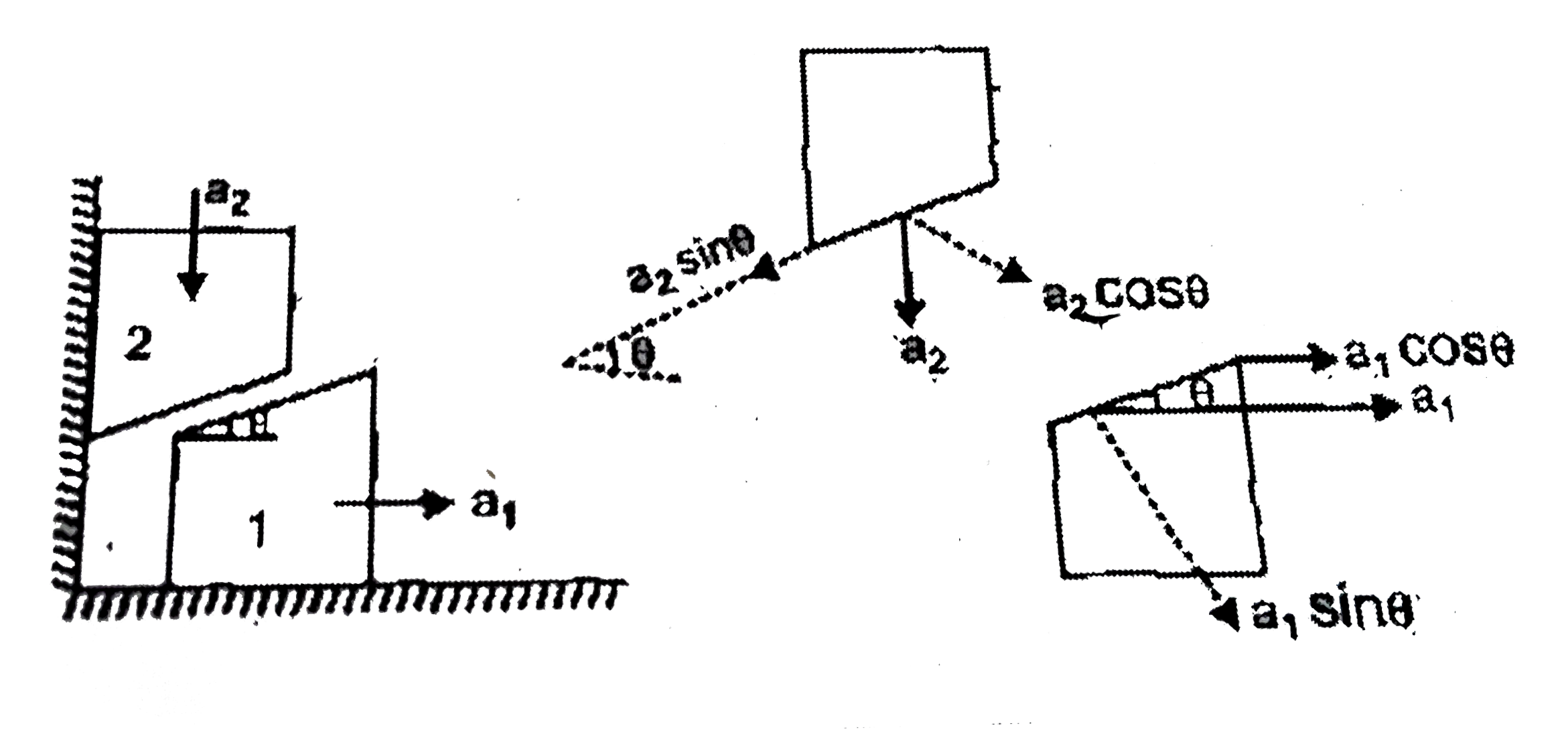
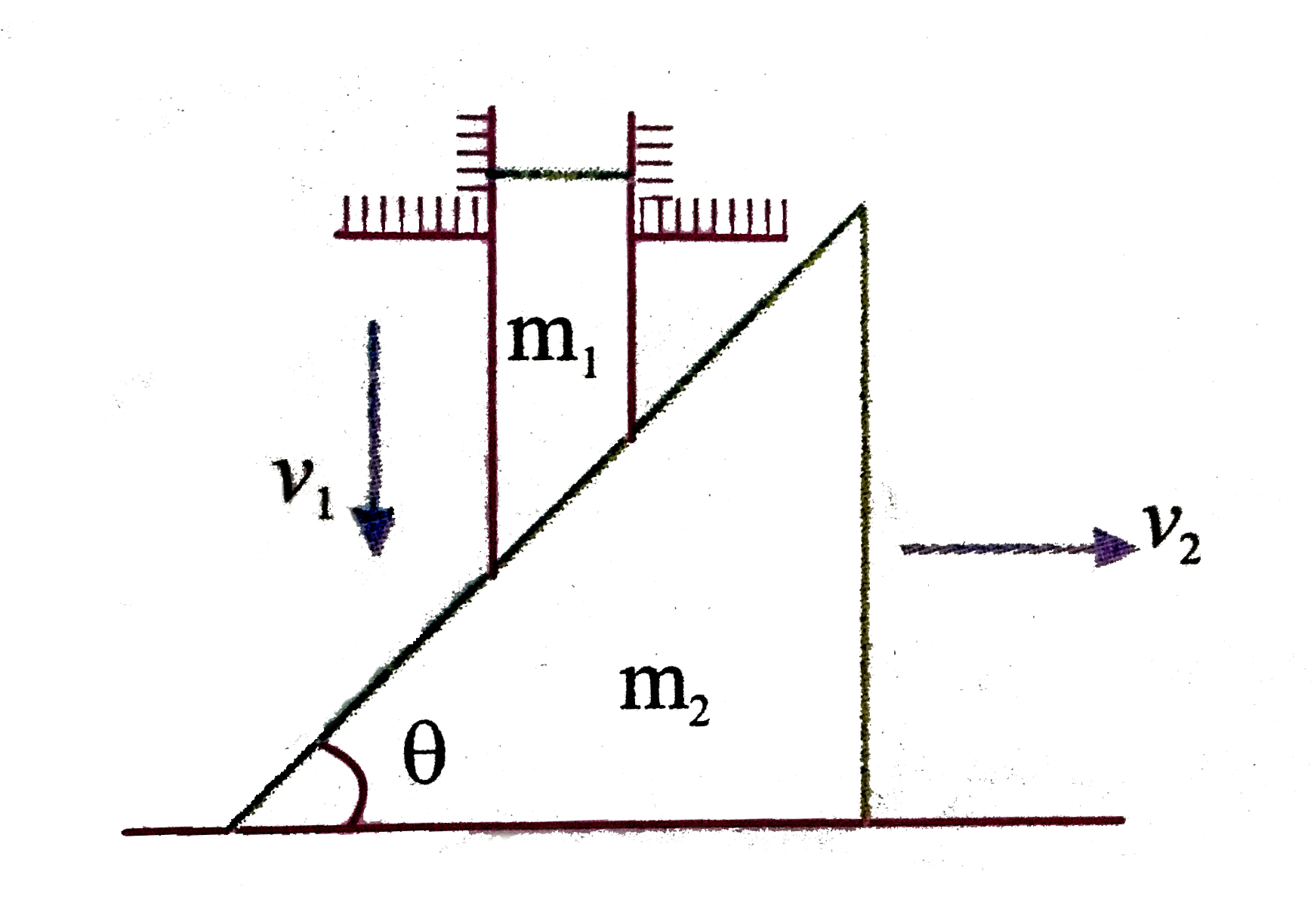 .
.